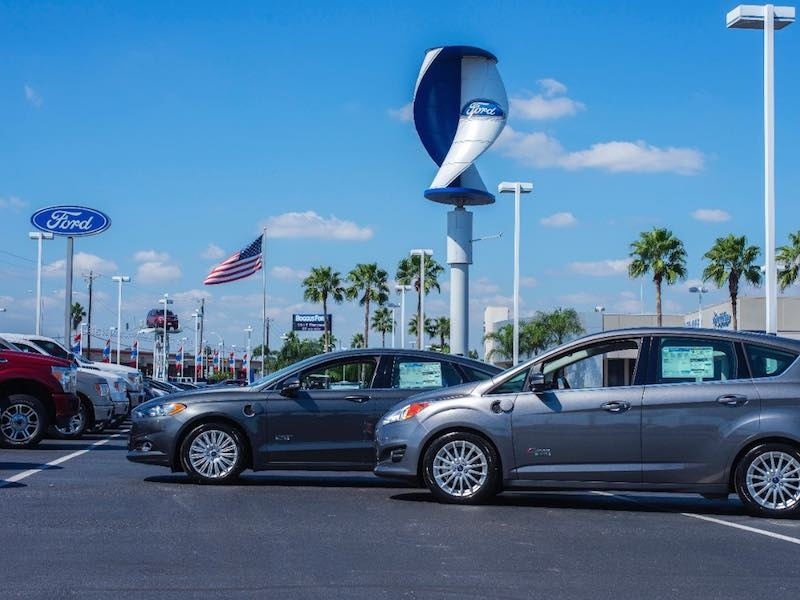When it comes to buying or selling a used car, knowing its fair market value is crucial. This is where Kelley Blue Book used car value comes in. As one of the most trusted names in the automotive industry, Kelley Blue Book provides buyers and sellers with an accurate estimate of a vehicle’s value based on various factors. This information allows individuals to make informed decisions, whether they’re negotiating a price with a dealership or conducting a private sale.
Kelley Blue Book (KBB) is a tool that both car buyers and sellers have come to rely on for decades. The company has a long-standing reputation for offering transparency in the used car market, making it easier for consumers to navigate what can sometimes be a confusing landscape. Kelley Blue Book used car value is a system designed to give an estimate of a vehicle’s worth by considering factors like its condition, make, model, mileage, and region.
What is Kelley Blue Book?
Kelley Blue Book was established in 1926 as a guide to help car dealers determine the value of vehicles they were buying and selling. Over the years, it has grown into a household name, known for its reliability and accurate data. Whether you’re a consumer or a professional in the automotive industry, Kelley Blue Book used car value offers a consistent and transparent means to assess the worth of any used vehicle.
The company provides two main types of values: the trade-in value and the private party value. The trade-in value is the amount a dealership might offer you for your vehicle, while the private party value is what you might expect to get when selling to an individual. Both figures offer a good indication of the Kelley Blue Book used car value but differ based on the context of the sale.
How Kelley Blue Book Calculates Used Car Value
One of the reasons Kelley Blue Book used car value is so widely trusted is the methodology used in their calculations. Kelley Blue Book gathers data from a variety of sources, including car auctions, private sales, and dealer transactions. This data is then analyzed by KBB’s proprietary algorithms, which take into account fluctuations in the market, regional differences, and economic conditions.
When determining the Kelley Blue Book used car value, key factors include the car’s age, make, and model, as well as its condition. For example, a well-maintained vehicle with low mileage will generally have a higher Kelley Blue Book used car value compared to a car that has been poorly maintained or driven extensively. Kelley Blue Book also considers optional features and accessories, which can add to the value of the vehicle.
Additionally, market conditions play a crucial role in determining the Kelley Blue Book used car value. During times of high demand for used cars, values tend to rise, while during periods of low demand, values may decline. Understanding this market fluctuation is essential for both buyers and sellers.
Why Kelley Blue Book is Important for Buyers
For buyers, Kelley Blue Book used car value offers a significant advantage when entering the car market. By consulting KBB, buyers can know whether a seller is offering a fair price for a used car. This transparency is especially valuable when negotiating with dealerships, where prices can often vary. Having a reliable reference like the Kelley Blue Book used car value helps ensure that you’re not overpaying for a vehicle.
Furthermore, Kelley Blue Book provides additional tools for buyers, such as vehicle history reports and expert reviews. These resources can further guide buyers in making a well-informed decision. Understanding the Kelley Blue Book used car value also empowers buyers by giving them more leverage during negotiations, making it easier to stick to a fair price.
Why Kelley Blue Book is Essential for Sellers
For sellers, Kelley Blue Book used car value is equally essential. Whether selling to a dealer or a private party, knowing the estimated value of your vehicle gives you a starting point for negotiations. Sellers who are unaware of their car’s worth risk being lowballed, particularly by dealerships who may offer less than the fair market value.
By knowing the Kelley Blue Book used car value, sellers can confidently set a price that reflects the true worth of their vehicle. Sellers can also use Kelley Blue Book to show potential buyers that the asking price is reasonable, which can help speed up the sale process.
The Impact of Car Condition on Kelley Blue Book Used Car Value
One of the most important factors that affect Kelley Blue Book used car value is the condition of the vehicle. Kelley Blue Book uses four primary conditions to categorize cars: excellent, very good, good, and fair. Cars in excellent condition will naturally fetch a higher value than those in fair condition. To achieve an accurate Kelley Blue Book used car value, it’s crucial to honestly assess your vehicle’s condition.
For example, cars with little to no cosmetic damage, regular maintenance, and low mileage tend to rank higher in the Kelley Blue Book used car value system. On the other hand, cars with significant wear and tear or high mileage will see a reduction in their value. Being transparent about the condition of the vehicle is important when working with KBB’s tools.
The Role of Mileage in Kelley Blue Book Used Car Value
Mileage is another key factor in determining the Kelley Blue Book used car value. Cars with fewer miles are generally more desirable, as lower mileage often indicates less wear and tear on the vehicle’s engine and other mechanical components. When calculating a car’s worth, Kelley Blue Book considers mileage alongside the car’s age to assess how much life it likely has left.
For instance, a 5-year-old car with 20,000 miles will usually have a higher Kelley Blue Book used car value than a car of the same age with 100,000 miles. The fewer the miles, the more valuable the car tends to be, which is a critical consideration for both buyers and sellers.
Regional Impact on Kelley Blue Book Used Car Value
It’s also important to note that the region where the car is being sold can have an effect on the Kelley Blue Book used car value. In areas where certain types of vehicles are more popular, such as trucks in rural areas or compact cars in cities, these vehicles may have higher demand and therefore higher values. On the other hand, a less popular car model in a specific region might see a lower Kelley Blue Book used car value despite its overall quality.
Kelley Blue Book adjusts for these regional variances to provide a more accurate estimate of a car’s value based on local trends. Whether you’re buying or selling a car, it’s essential to consider the influence of geography on the Kelley Blue Book used car value.
Final Thoughts on Kelley Blue Book Used Car Value
The Kelley Blue Book used car value system has been a cornerstone of the automotive industry for decades. It offers both buyers and sellers a reliable method for determining the fair market value of a used vehicle. Whether you’re looking to buy a used car or sell one, consulting Kelley Blue Book ensures that you enter negotiations with the knowledge you need to make a fair deal.
By understanding how Kelley Blue Book calculates its values and the factors that influence them, consumers can make smarter choices in the used car market. For both buyers and sellers, knowing the Kelley Blue Book used car value can make all the difference in getting a fair price.




